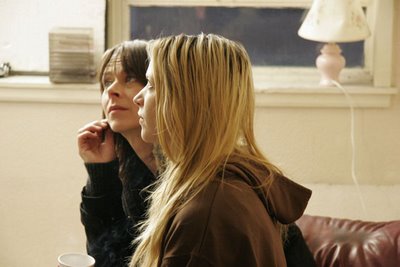
First chance last week to compare, on a big cinema screen, a new digital print with its 35mm celluloid version. In 1986 I was lucky to work with the newly restored National Film Archive print of Black Narcissus (1947). We made slides directly from the print on a Steenbeck in the basement of the BFI. I certainly got to know the print well and so I was fascinated to see the digital version. Overall, the digital print is beautiful, clean and bright. But perhaps it is too clean and too bright? I particularly noticed three examples of 'over clarity'. There are many close-ups in the film, especially of Deborah Kerr as Sister Clodagh. Her eyes sparkle with reflected light but it gets a little spooky when the shot is faded out and two sparks of light remain as a kind of afterglow, long after the rest of the image has gone to black. Much more disturbing is the way that the digital print exposes all the matte work so that the imaginary kingdom of Mopu, with its palace perched on a shelf above a vertical drop, looks just like a studio set joined together by flourescent turquoise cement that pulsates gently drawing even more attention to the join. Finally, I noticed that the painted still images of the mountains now look exactly that -- painted images, seemingly with some damage from the ravages of time.
Black Narcissus is one of the most beautiful films ever made (a double Oscar winner for colour cinematography and art direction in 1947) so a process that exposes some its magic is not all good news. On the other hand, it won't deteriorate any further in the near future. The jury is still out on digital.
(The image is from a first generation DVD copy of the film.)

